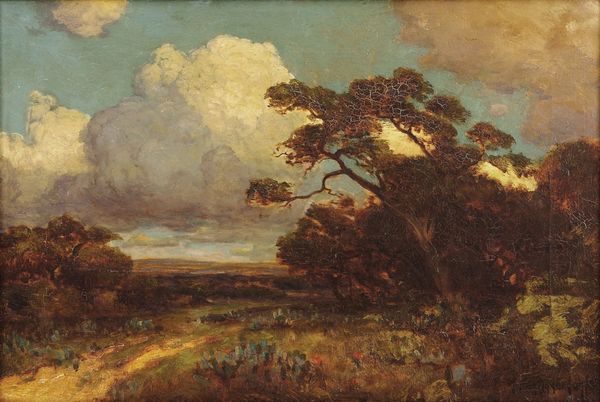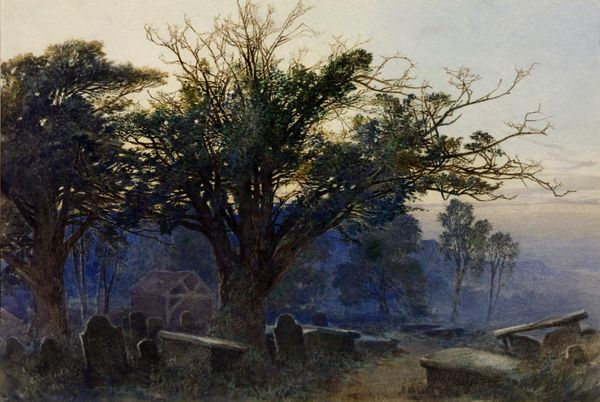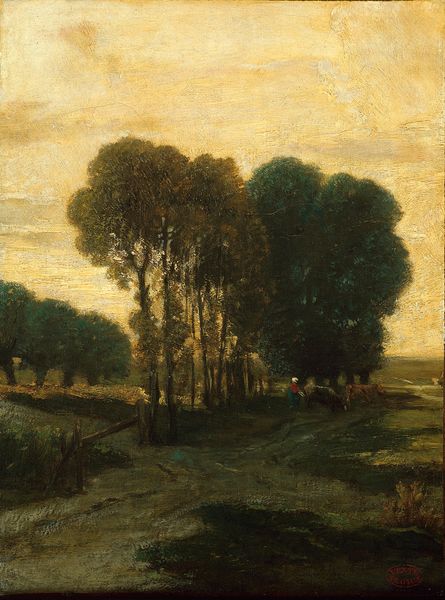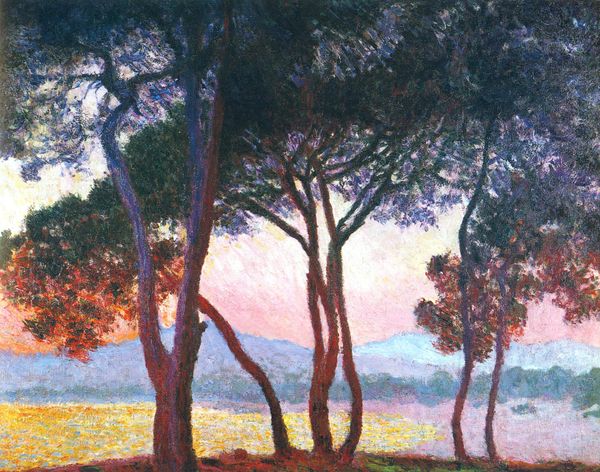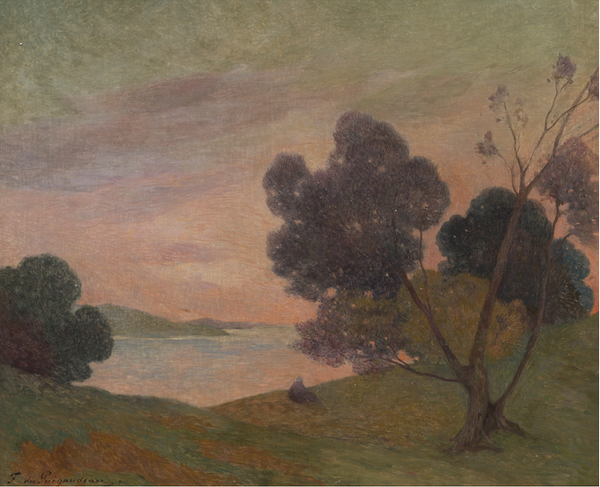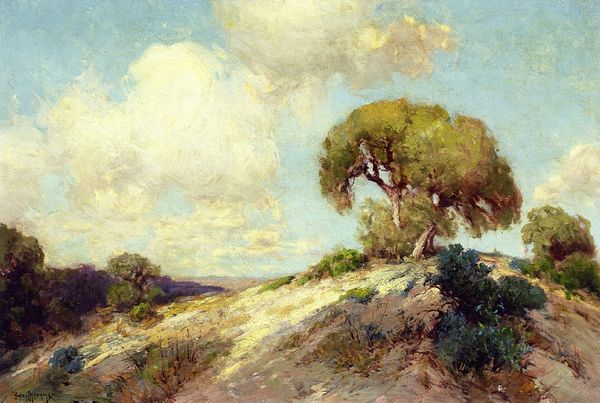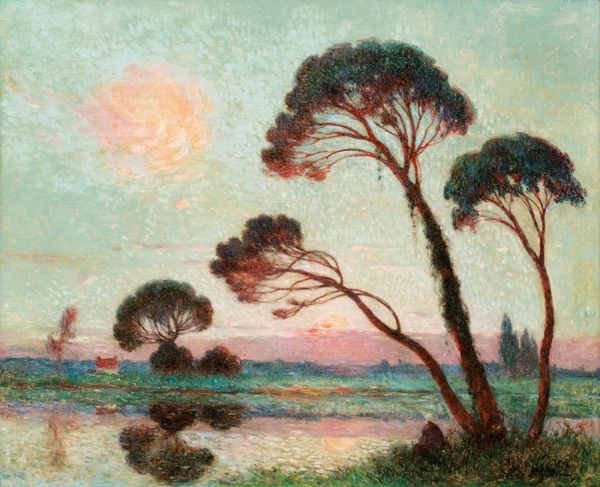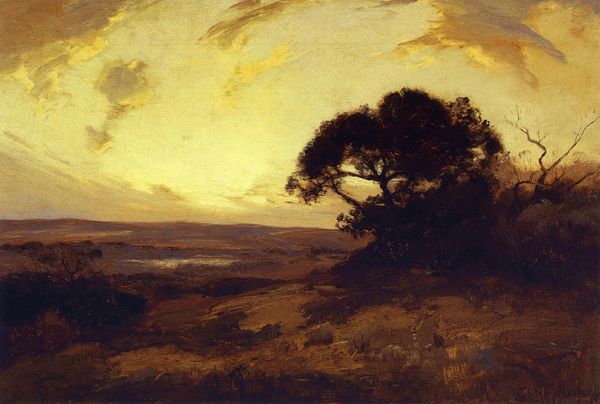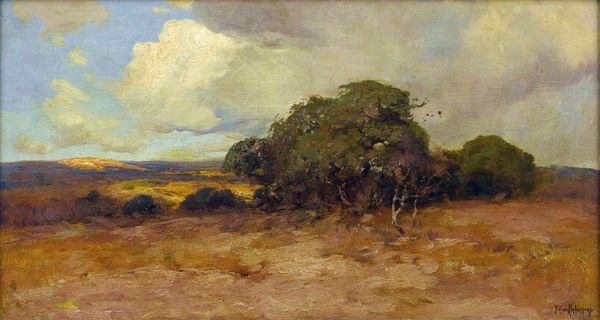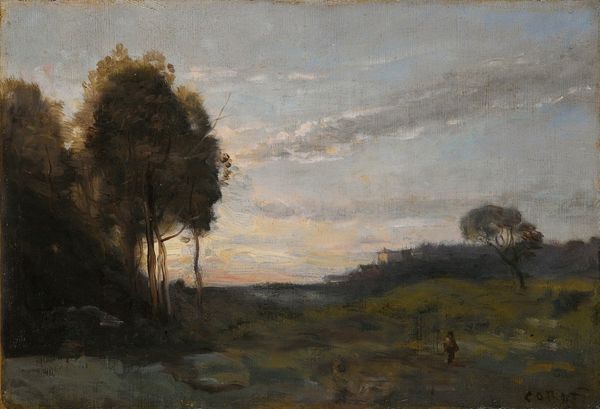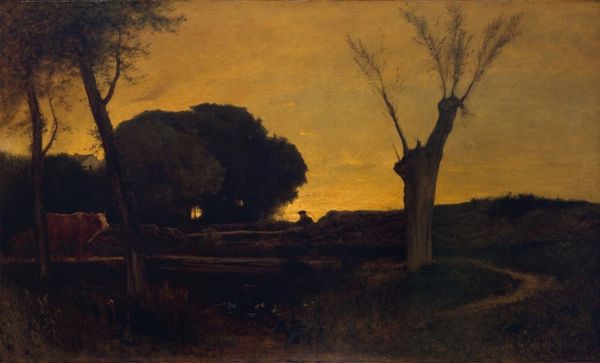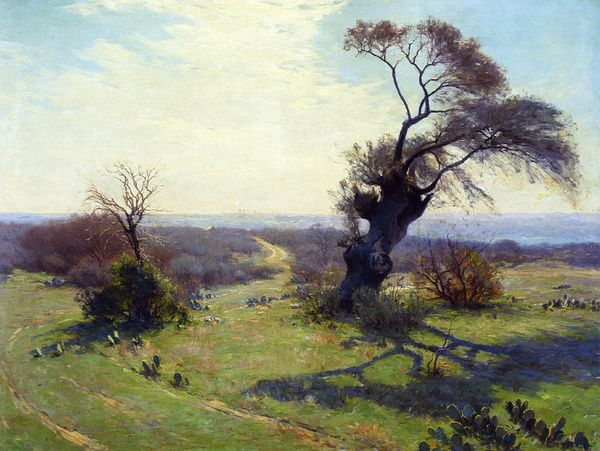
Copyright: Public domain
Curator: Ferdinand du Puigaudeau's "Landscape, Hills of Guerande," painted in 1915, captures a moment of serene beauty, wouldn't you agree? Editor: Yes, serene. My initial impression is of muted melancholy; the heavy silhouettes of the trees against that pale sky create a powerful sense of isolation, almost as if we’re witnessing a symbolic scene of loss amid a vast, indifferent landscape. Curator: That sense of melancholy, as you put it, perhaps mirrors the social landscape of its time. Painted during World War I, this landscape offers a counterpoint to the industrialized slaughter, returning the viewer to the land. Consider the rural population of Guerande, and how such sweeping devastation on the front must have amplified existing feelings of marginalization. Editor: While context enriches, the application of the oil paint demands consideration as well. See how Puigaudeau uses impasto to give the foreground a tactile quality, drawing the viewer into the scene? The varied brushstrokes create a dynamic surface. Curator: Absolutely. It speaks volumes about the politics of observation—what is made visible and what remains in shadow. Who is granted access, and who remains forever at the periphery, like that lone figure walking off into the distance? Editor: Indeed. The subdued palette, primarily greens, browns, and grays, creates a visual harmony but also amplifies that somber mood. And look closely—there is a flattening of perspective. It's post-impressionist but with romantic undercurrents; an almost dreamlike quality. Curator: I think what’s key is recognizing how Puigaudeau gives visibility to rural life during an era preoccupied with violent modernism, subtly drawing our attention to other ongoing but often ignored realities. Editor: In essence, the composition invites contemplation of form while simultaneously echoing larger questions of history and place, don't you think? Curator: Yes, and through that interaction of form and context, it reveals new perspectives on an important but frequently marginalized viewpoint of the war. Editor: So, from an aesthetic examination rooted in shape, color, and texture to a broader understanding interwoven with political relevance. A rich viewing experience indeed.
Comments
No comments
Be the first to comment and join the conversation on the ultimate creative platform.
